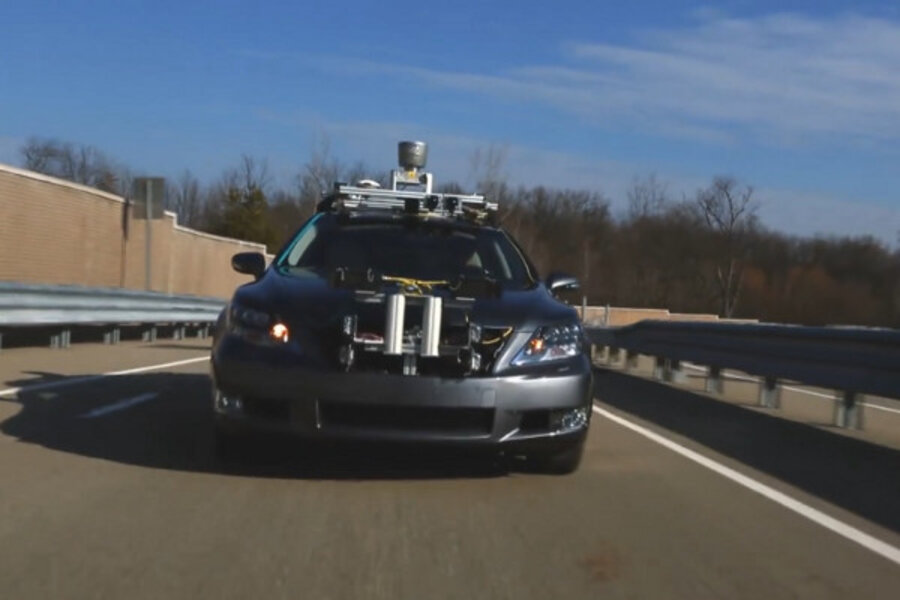CES 2013: Toyota and Audi roll out new self-driving cars
You’ve probably heard that Google has been working for years to develop self-driving cars – but the search-engine giant isn’t the only game in town when it comes to autonomous driving. Toyota and Audi are preparing to show off their own semi-driverless cars at the 2013 Consumer Electronics Show, which opens next week in Las Vegas.
Toyota will be bringing a version of its luxury Lexus LS, which sports a spinning radar on top of the car and camera equipment on the front. The car also features technology called Intelligent Transport Systems, which allows the car to communicate with other vehicles on the road as well as with the highway “grid” (think of a decentralized computer network that could, eventually, plan traffic and coordinate each different vehicle’s path).
Toyota leaked a video ahead of its Jan. 7 announcement that shows a Lexus LS decked out with driverless technology speeding down a highway.
Audi’s a little tighter-lipped with the details, but The Wall Street Journal reports that it will be bringing a car that can find a parking space on its own, and park itself without help from a driver. Audi’s been working on autonomous vehicle technology for quite a while, as have Ford and Mercedes-Benz.
A lot of the driverless cars currently available from big automakers might be better described at this point as “semi-autonomous.” They add features that reduce the need for driver input, rather than doing away with human operators altogether.
Toyota, for example, notes in a press release that its “high-level driver assistance systems” are designed to make things safer for the driver of the vehicle and for other vehicles on the road. Lots of cars today have “adaptive cruise control,” which matches a vehicle’s speed to that of surrounding traffic. And some cars can automatically steer themselves back into a lane if the driver veers out of it by accident.
There’s no mistaking where Toyota and Audi are headed, though: With its spinning radar and communications array, the Lexus LS is aiming to be a fully autonomous vehicle that can operate safely without driver interaction. (By the way, even though Google tends to use Toyota cars in its self-driving fleet, the two companies say their driverless technologies were developed separately.)
A driverless future might be coming sooner than you think -- but we’ll have to wait for CES 2013 to roll around to find out more.
For more tech news, follow Jeff on Twitter: @jeffwardbailey.






